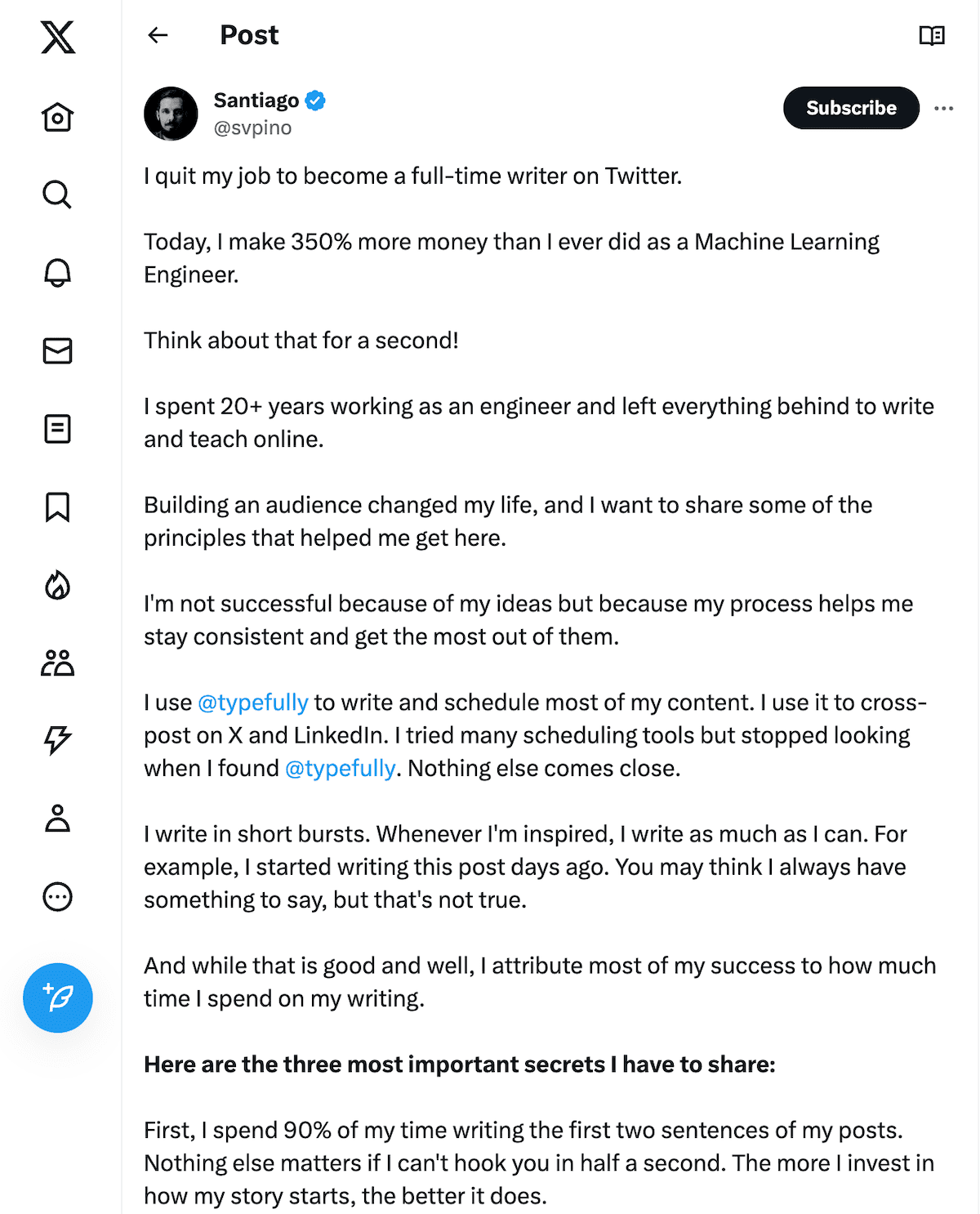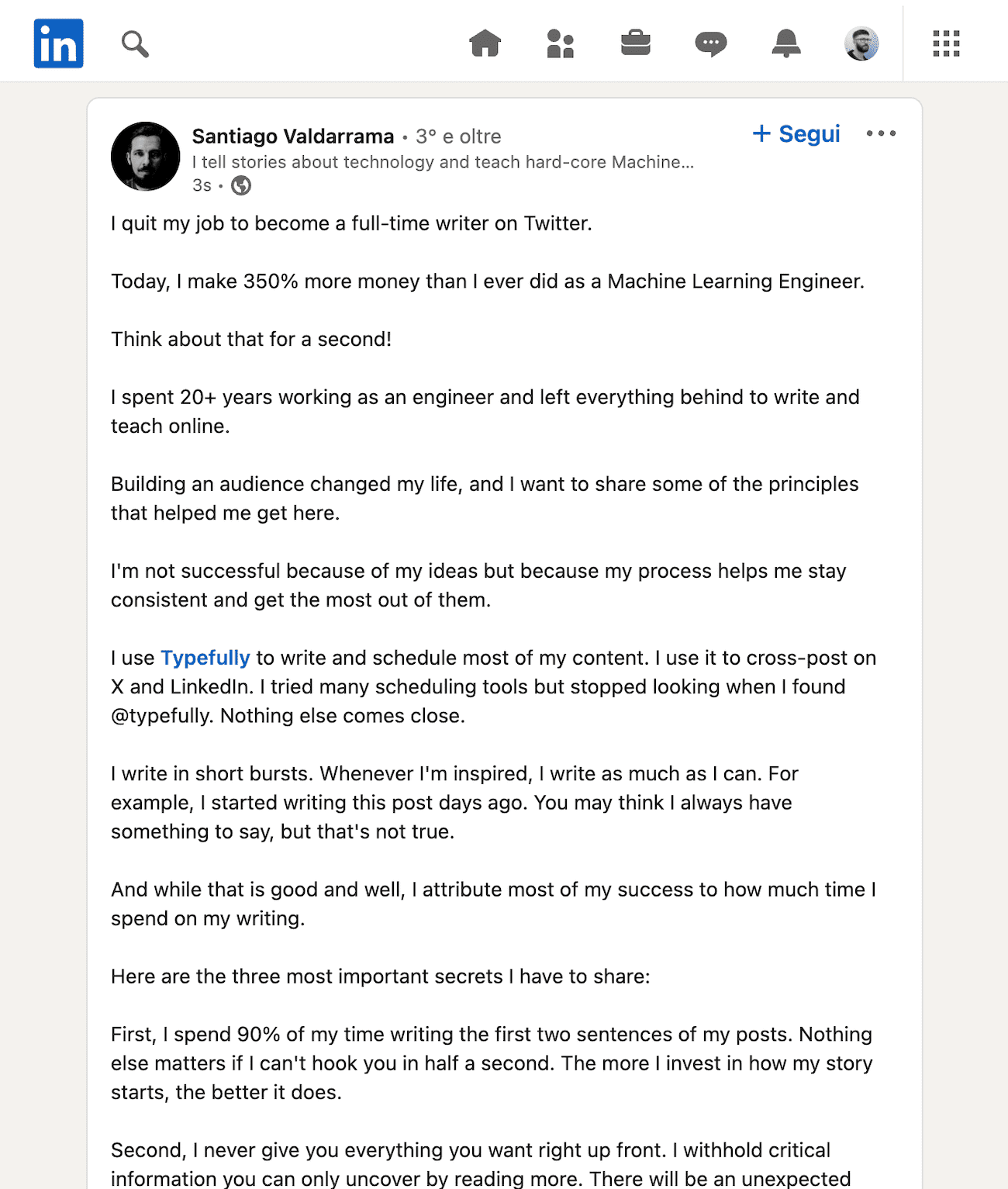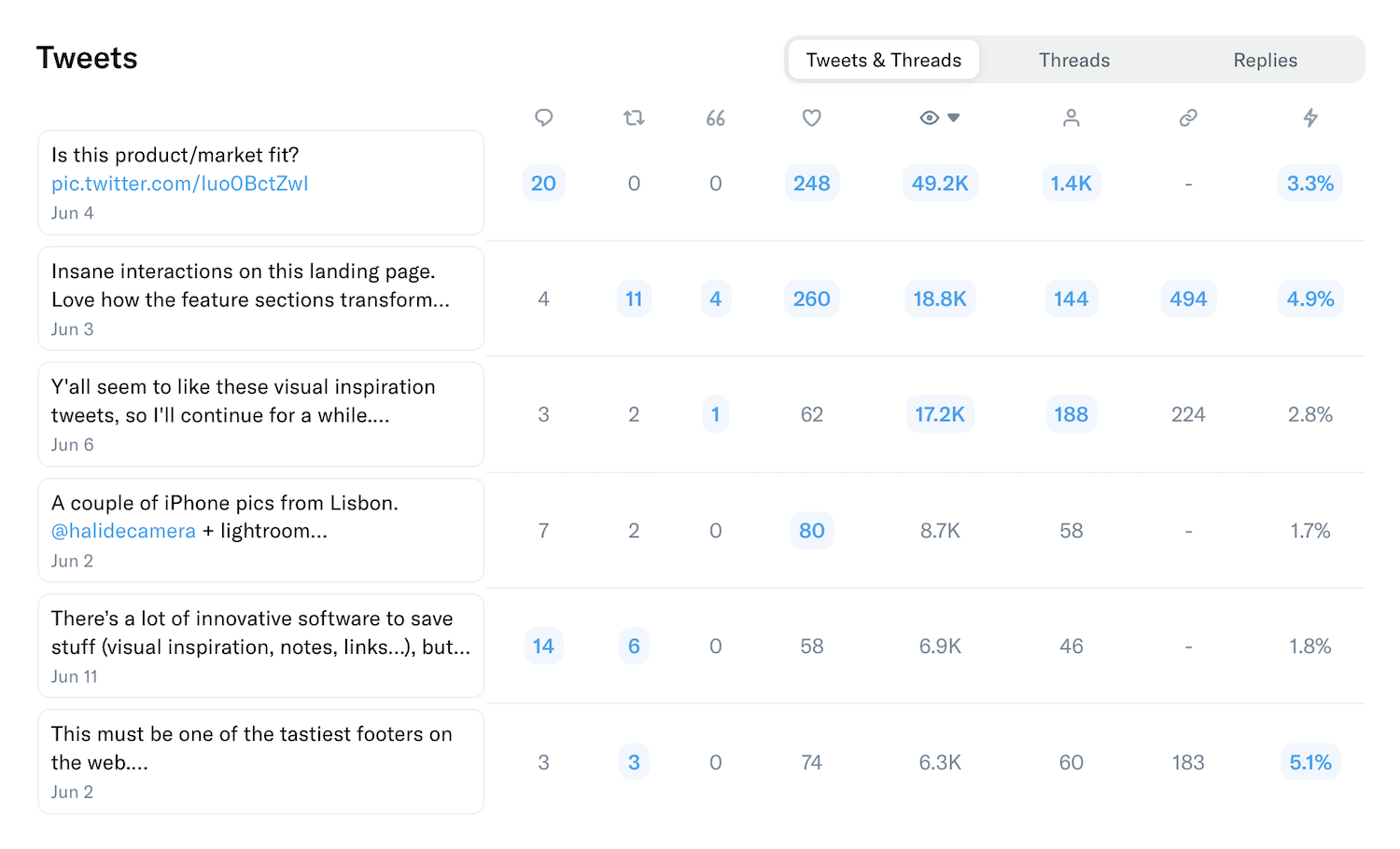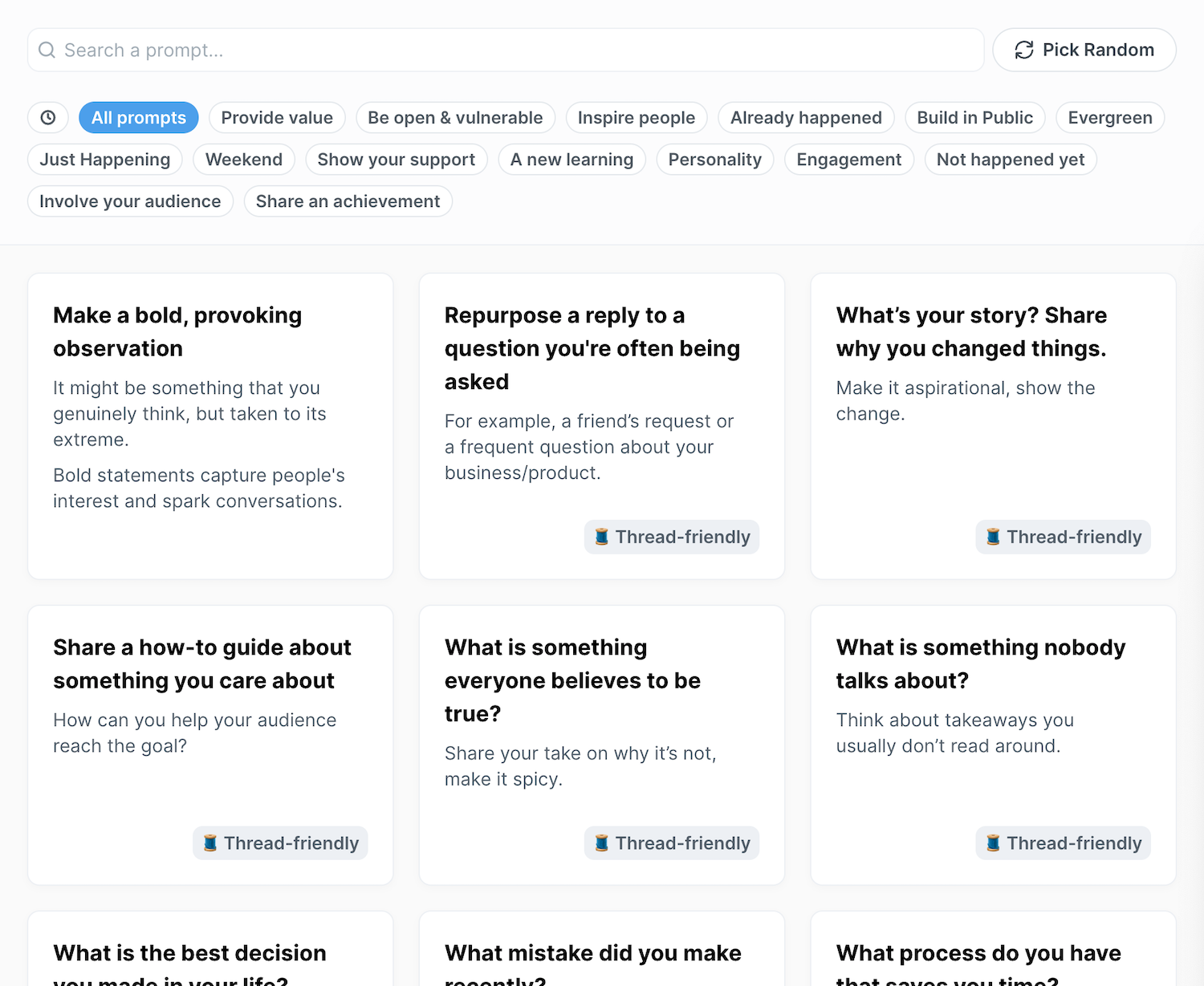Write better content
Grow your audience faster
Built for 𝕏, LinkedIn, and Threads, powered by AI
Write & schedule, effortlessly
Craft and publish engaging content in an app built for creators.
Publish anywhere
Post on LinkedIn, Threads, & Mastodon at the same time, in one click.
Typefully
@typefully
We're launching a Command Bar today with great commands and features.
AI ideas and rewrites
Get suggestions, tweet ideas, and rewrites powered by AI.
Turn your tweets & threads into a social blog
Give your content new life with our beautiful, sharable pages. Make it go viral on other platforms too.
+14
FollowersPowerful analytics to grow faster
Easily track your engagement analytics to improve your content and grow faster.
Share a recent learning with your followers.
Pose a thought-provoking question.
Never run out of ideas
Get prompts and ideas whenever you write - with examples of popular tweets.
@aaditsh
I think this thread hook could be improved.
@frankdilo
On it 🔥
Share drafts & leave comments
Write with your teammates and get feedback with comments.
Easlo
@heyeaslo
Reply with "Notion" to get early access to my new template.
Jaga
@kandros5591
Notion 🙏
Create giveaways with Auto-DMs
Send DMs automatically based on engagement with your tweets.
And much more:
Auto-Split Text in Posts
Thread Finisher
Tweet Numbering
Pin Drafts
Connect Multiple Accounts
Automatic Backups
Dark Mode
Keyboard Shortcuts
Creators love Typefully
180,000+ creators and teams chose Typefully to curate their Twitter presence.
Queue your content in seconds
Write, schedule and boost your tweets - with no need for extra apps.
Schedule with one click
Queue your post with a single click - or pick a time manually.
Pick the perfect time
Time each post to perfection with Typefully's performance analytics.
Boost your content
Retweet and plug your posts for automated engagement.

Start creating a content queue.
Write once, publish everywhere
We natively support multiple platforms, so that you can expand your reach easily.


Check the analytics that matter
Build your audience with insights that make sense.

Writing prompts & personalized post ideas
Break through writer's block with great ideas and suggestions.
Never run out of ideas
Enjoy daily prompts and ideas to inspire your writing.
Use AI for personalized suggestions
Get inspiration from ideas based on your own past tweets.
Flick through topics
Or skim through curated collections of trending tweets for each topic.

Write, edit, and track tweets together
Write and publish with your teammates and friends.
Share your drafts
Brainstorm and bounce ideas with your teammates.
@aaditsh
I think this thread hook could be improved.
@frankdilo
On it 🔥
Add comments
Get feedback from coworkers before you hit publish.
Read, Write, Publish
Control user access
Decide who can view, edit, or publish your drafts.
Build an automated post machine
Our Zapier integration enables countless no-code workflows.


Share new drafts in Slack channel


New draft from RSS feed item content


New scheduled draft from Google Doc


New spreadsheet row from published post


Create new template draft every Monday


Send an email for every published thread


Create draft for new items in feeds folder


Thank new followers with a post


Share new drafts in Slack channel


New draft from RSS feed item content


New scheduled draft from Google Doc


New spreadsheet row from published post


Create new template draft every Monday


Send an email for every published thread


Create draft for new items in feeds folder


Thank new followers with a post
Ready to write better content and grow your audience?
Get started with our generous free plan.
© 2024 Typefully Inc.